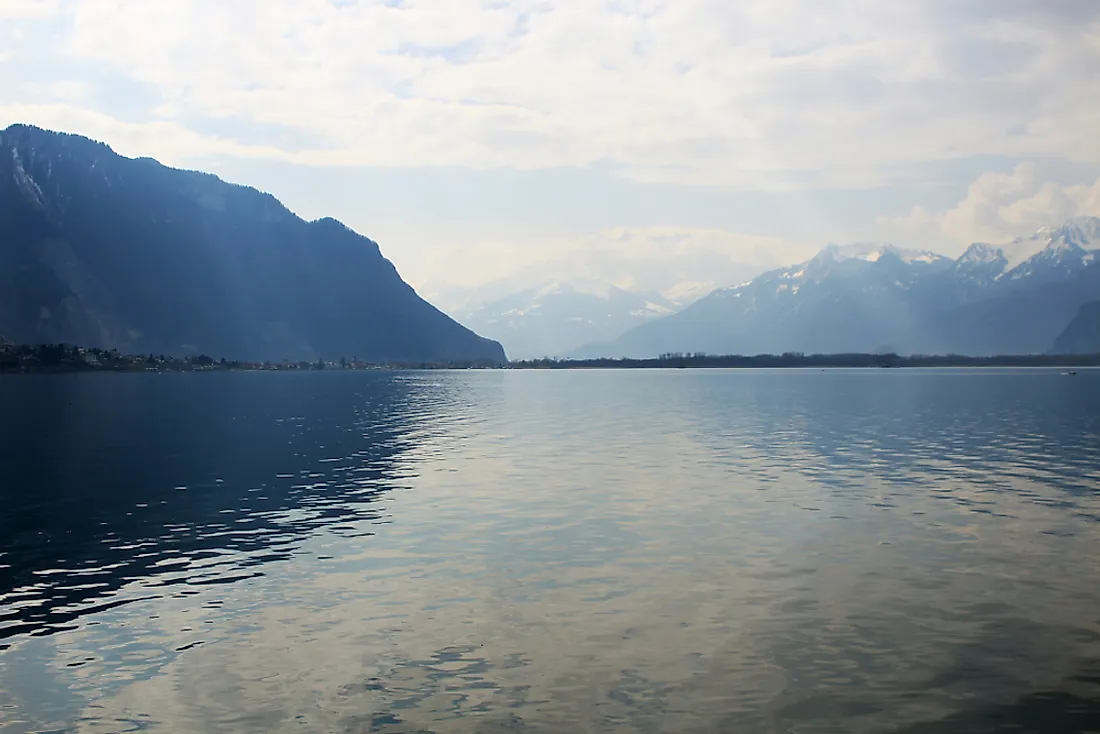What Are Seiche Waves?

Seiche has a French-Swiss origin and means to sway back and forth. Seiche waves occur in either semi- or fully- enclosed water bodies such as gulfs, lakes, and bays. A seiche wave is a standing wave that oscillates in a water body due to seismic or atmospheric disturbances creating large variations of water levels in a short time. Once the wind stops, the water rebounds to the opposite side of the water body. The wind pushes the water level up on one side of the water mass and makes the level drop on the opposite side by a corresponding volume as the other side. Seiche waves were first observed in Lake Geneva, Switzerland by Swiss hydrologist Francois-Alphonse Forel in 1890.
Formation of Seiche Waves
For seiche waves to be formed, some requirements need to be fulfilled. A seiche occurs in a water body that is either semi-or fully closed.There must be strong winds to move the water and rapid changes in atmospheric pressure. Sometimes seiches are introduced by tsunamis which cause the water column to be displaced vertically.
Seiches Around the World
Seiches have been observed in different water bodies in the world. Seiches have been observed on swimming pools, bays, harbors, reservoirs, lakes, and seas. On larger lakes, low rhythmic seiches are experienced and are almost unnoticed except during unusual calm periods. However, small seiches with amplitudes measuring a few centimeters lasts a few minutes. Lake Wakatipu in New Zealand is well known for its regular seiches which lasts for about 27 minutes with a height variation of 20 centimeters. Seiches in seas and bays such as the Adriatic Sea and Baltic Sea often causes flooding of Venice and St. Petersburg respectively. Nagasaki Bay in Japan has experienced seiche waves from time to time. Lake Erie also receives seiches that affect cities such as Buffalo in New York and Toledo in Ohio. Lake Union in Seattle, Washington is also prone to seiches because the east and west sides are almost parallel and have a V-shaped northern end that focuses the waves.
Differences Between Seiche and Storm Surge
When a seiche occurs, the water level oscillates from one end of the lake to the other, taking as long as 15 minutes to several hours until the water in the water mass comes to a rest. Another difference is that a seiche can be noted through a rapid rise or fall in water levels while in a storm surge there is always a rise in water levels. A seiche is caused by an energetic occurrence such as an earthquake that impacts energy on a mass of water while a storm surge happens when a low-pressure system occurs in an ocean such as a tropical cyclone blow across the water surface making the oceans churn.
Potential Hazards of Seiche Waves
Some seiches have caused flooding in areas around Lake Michigan, Lake Erie, and Lake Washington among others. Also, very large seiche waves usually strain cables anchoring bridges in the lakes. Flooding in these areas results in loss of life and property.











